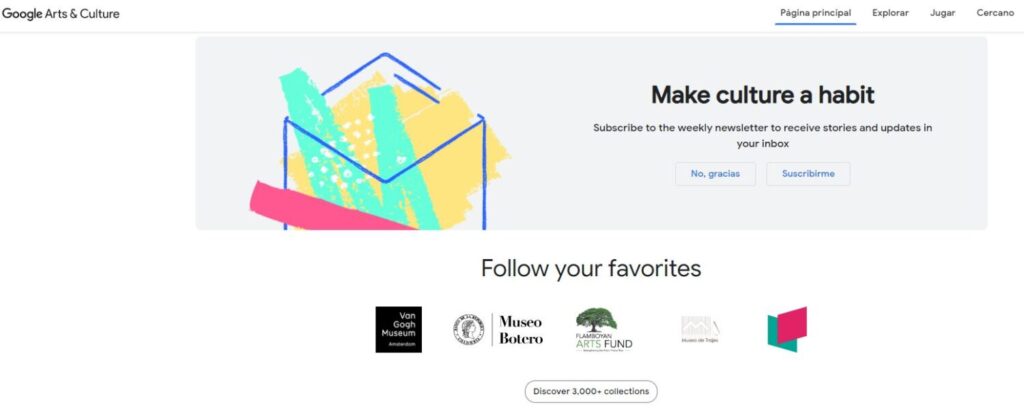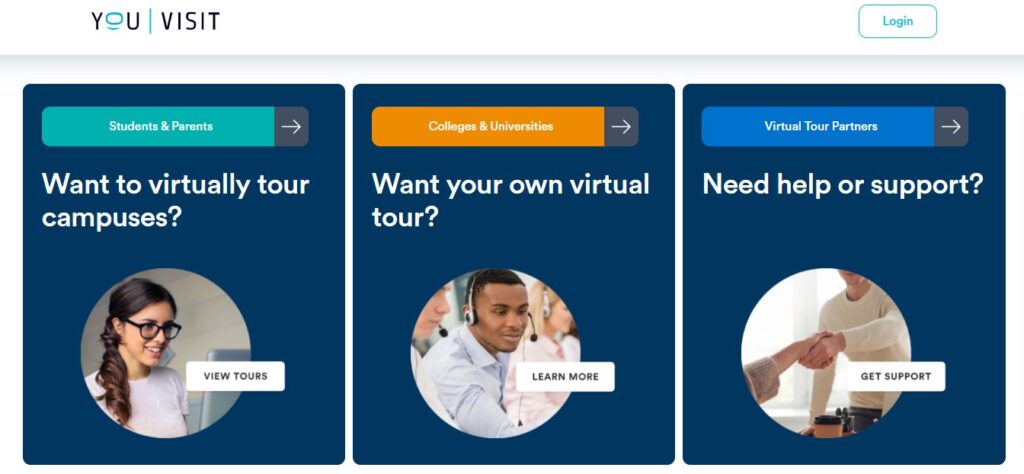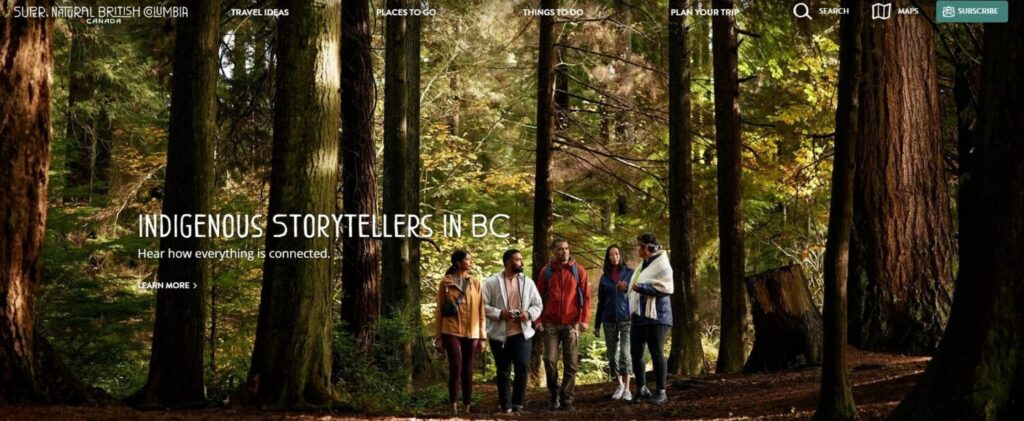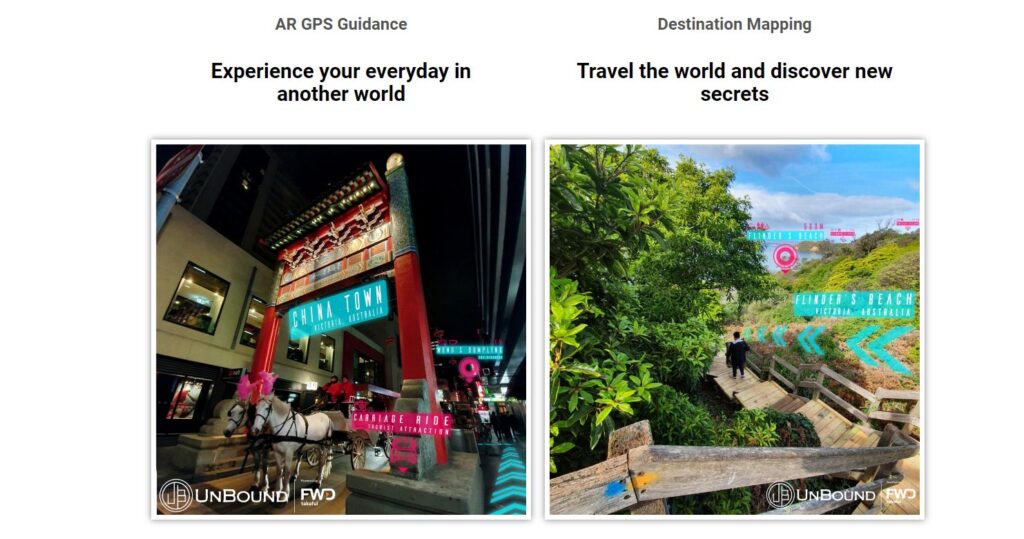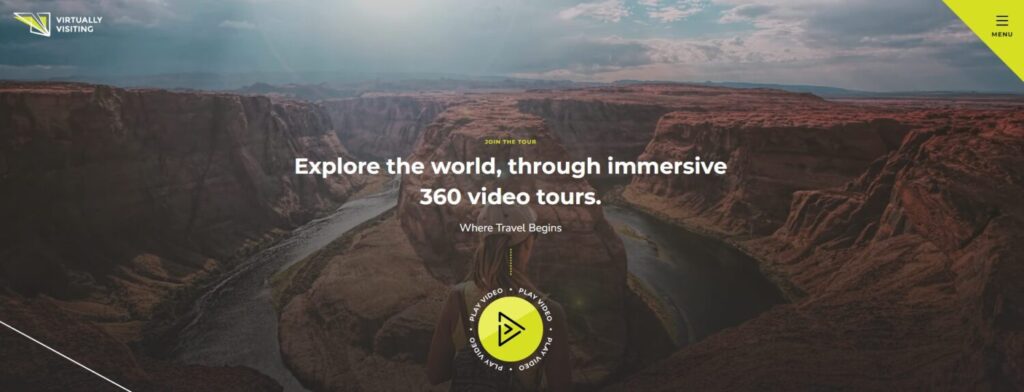Everything You Need to Know About Virtual Tourism Companies
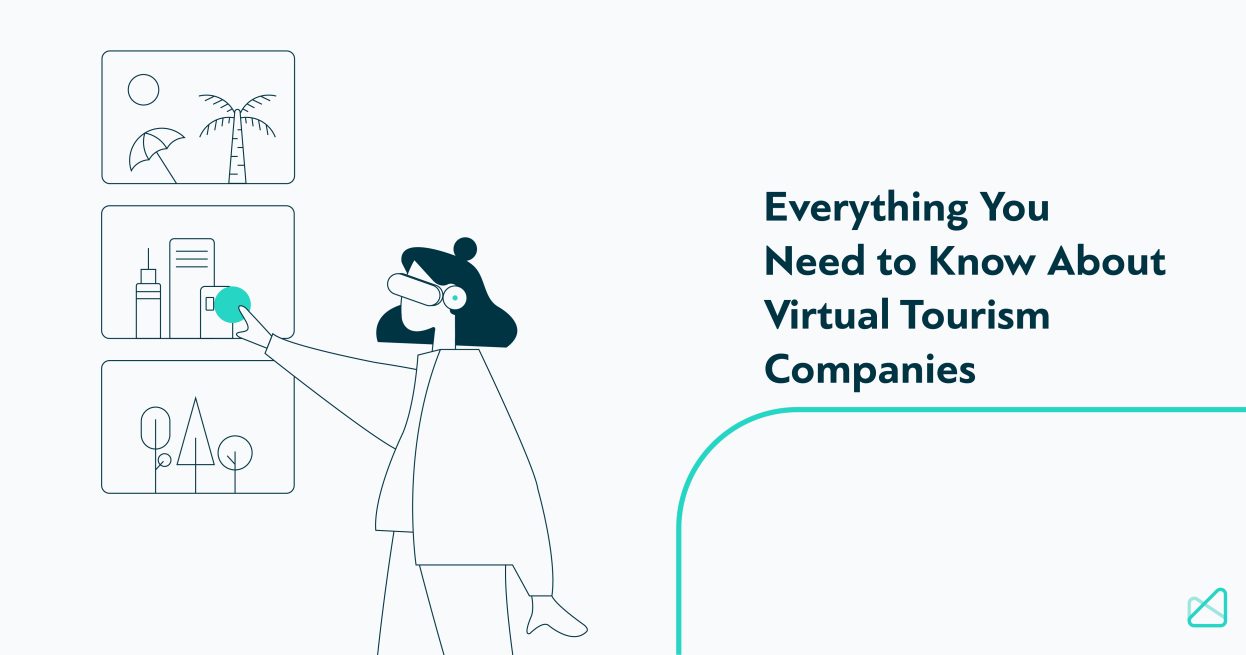
Virtual tourism refers to a specific tourism niche using technology that enables travelers to experience activities, locations, and destinations without leaving their homes. The types of virtual tours depend on the multimedia format offered to travelers. It can be anything ranging from still images, video, and audio to interactive virtual reality.
The popularity of virtual tourism spiked with the start of the COVID-19 pandemic. The pandemic had limited where people could go, forcing travelers to look for alternative options.
Thanks to these particular developments, many travelers had an opportunity to experience virtual tourism for the first time. And it appeared attractive as it removed all kinds of limitations associated with travel, such as available flights, accommodation, tour guides, safety concerns, and others.
Virtual tourism benefits travelers and the travel industry as a whole. It enables companies to launch immersive marketing campaigns, facilitate the promotion of specific destinations or activities, improve the planning of tourist attractions, and enhance the travel experience.
Since this is an emerging travel niche, you are probably eager to learn more about virtual tourism companies. Below you can find out what these companies are and how they operate and discover the crucial stats. You will also learn about their challenges and go through 10 top virtual tourism companies nowadays.
Virtual Tourism Companies
Let’s start with something as basic as what virtual tourism companies are and then build up towards how they operate, make money, and the advantages and disadvantages of virtual tours.
What is a virtual tour company?
A virtual tour company specializes in delivering virtual experiences to travelers. Generally speaking, there are two types of virtual tour companies. Some create their own virtual tour experiences and sell them to end consumers. However, some virtual tour companies act as marketplaces enabling experts to stream virtual tours through their platforms.
You should also pay attention to one specific type of virtual tour company. These companies don’t work with end consumers. Their target customers are major players in the travel sector, including other travel companies looking for vendors specializing in creating multimedia formats on request.
How virtual tourism companies operate
Since no uniform business model exists in the niche, it’s impossible to pinpoint one universal blueprint for how virtual tourism companies operate. The most classic approach you’ll see in Airbnb Online Experiences is creating a marketplace for virtual tourism multimedia format creators. It allows the creators to publish their virtual experiences and invite travelers to join them.
Some, such as Google Arts & Culture, operate as repositories. In this specific instance, a repository of the world’s art and culture.
Finally, virtual tourism companies specializing in creating and producing multimedia formats are devoted to using new tech to improve the experience and enable consumers to fully immerse themselves in everything a destination offers.
Overview of how virtual tours make money
There are several ways virtual tours make money. Even if you publish a virtual tour for free online, you can earn money through online ad programs. The most obvious money-making method for virtual tours is to market them as premium products. That’s how virtual tours become a legit travel product; consumers can search for, compare, and purchase.
Premium virtual tours can also make money for travel companies through commission rates. For instance, a virtual tour marketplace can make money by enabling creators to publish their virtual experiences.
Finally, virtual tour creators can make money selling their tours to other travel companies that don’t have access to experts or have time and budgets to create virtual tours on their own.
Advantages and disadvantages of virtual tours
Virtual tours, like their real-life counterparts, have a set of their own unique advantages and disadvantages. Let’s review the most noteworthy ones.
Advantages
The advantages of virtual tours go as follows:
- Convenience – people can visit available destinations and experience attractions from any place they like
- Accessibility – consumers limited by disability or health issues can now immerse into experiences otherwise unavailable to them or available at high risks and efforts
- Flexibility and freedom – you can pause/play most of the virtual tours and continue where you’ve left off the next time
- Affordability – compared to standard tourism tours, virtual ones are significantly more affordable
- Low environmental impact – regarding eco-friendliness, virtual tours have a considerably lower environmental impact than standard tours.
Disadvantages
On the other hand, virtual tours have disadvantages of their own as well:
- No physical interaction – tourists are unable to interact with fellow travelers or interact with various aspects of the destination;
- There are still technical limitations – technical issues can potentially ruin the experience;
- Lack of information – multimedia formats can be outdated and provide fewer details or inaccurate information;
- No to limited social interaction – some multimedia formats limit social interaction, which is an integral part of the travel experience for some individuals;
- Limited monetization potential – only virtual tours can be monetized, which leaves out the entire economy at a destination.
Stats about the success of virtual tours
The virtual tourism market is blooming. According to the latest reports, the global virtual tourism market reached $385.75 billion in 2022. The same reports indicate that the market will register a CAGR of 14.34% during the next five years to finally reach the size of $847.95 billion by 2028.
People are generally satisfied with virtual tourism tours. In fact, 73% of travelers who had experience with virtual travel are happy with the experience and would like to repeat it in the future. Online exhibits are particularly popular nowadays. According to the latest reports, online exhibit viewership has increased by a whopping 4,106%.
During the COVID-19 pandemic, virtual tours became super popular. The number of booked virtual events increased by 1,000% by 2020. Be mindful, though, that it doesn’t only include virtual tourism products but work conferences, industry events, and college classes as well.
Finally, modern travelers’ needs, wants, and expectations are shifting. They’ve discovered that virtual tours are easier to attend and more cost-efficient. A survey found that 84% of consumers wanted a virtual option for events.
10 examples of virtual tourism companies
Below you can find 10 examples of virtual tourism companies. Each one of them is unique in terms of the types of available virtual tours and used tech.
| Virtual tour company name | Description | Types of virtual tours | Technology used | Revenue model and success metrics | Notable partnerships or collaborations | Customer support and accessibility | Reviews or testimonials | Unique strengths or weaknesses |
| Airbnb Online Experiences | Airbnb Online Experiences is a virtual tour platform under the renowned Airbnb brand | Special video events hosted by experts | Zoom | Direct sales and commission | Okta, Tonkean, automate.io, Guesty, and many others | Self-service help desk | “One of my favorite features of the Airbnb platform is the special class of Experiences for social enterprises and NGOs.” | Focus on social interactions |
| Google Arts & Culture | A comprehensive platform where consumers can access high-quality images and videos of artworks and cultural artifacts | Images, videos, interactive games, and written copies | Web, Mobile and AR | Non-commercial | The British Museum, Guggenheim Bilbao, MoMA, and thousands of others | N/A | “One of the many engaging components of Google Arts & Culture app is the AR feature that allows users with newer smartphones to view real-size artwork in their own environments.” | Arts & Culture iPhone and Android mobile app |
| YouVisit | A virtual tour company that specializes in creating immersive experiences for brands and their audiences. | 360 Virtual Tours, Ultimate Virtual Tours, and interactive web content | Aria platform | Direct sales | EAB | Online contact form, getting-started guides, FAQs, and a self-service help center for technical support | “A great tool for attracting new leads, providing the information they may need, and analyzing metrics…all while creating an interactive and immersive campus experience.” | Creates realistic tours and communicates useful information about important buildings, activities, and other aspects of a tour. |
| VR Gorilla | A virtual reality production studio | VR content | Cutting-edge cameras and software | Contracts and direct services sales | DSM, Amsterdam UMC, Erasmus MC, Jeroen Bosch Hospital, and many others | Online contact form | “We were looking for VR software possibilities and came across VR Gorilla. They helped us out in the best way possible! Great experience with and a great staff. Definitely recommended!” | VR Gorilla team has experience as filmmakers which makes their experiences really immersive |
| Haptical | A web portal focused on delivering important VR and AR-related news | News | NA | NA | NA | NA | NA | Always publishes recent and most important news in VR and AR niches |
| TimeLooper | A pioneer in interpretive experience design delivering mesmerizing virtual tours | Educational content, and virtual tours of destinations | Web and mobile technologies and combines them with high-quality videos, images, 3D renders, GIS mapping, holographic imaging, VR, and AR | Direct sales | NA | Email and phone | NA | TimeLooper leverages storytelling to really encaptivate viewers and AR to spike engagement rates through the roof |
| Wild Within VR | A product launched by Destination British Columbia tourism company | Interactive VR adventures | Oculus | Direct sales | NA | NA | “I love it. It feels like Im really there. More destinations please!” | It offers different types of adventures to meet the expectations of many fellow travelers and adventurers |
| Unbounded | A virtual tourism company devoted to introducing viewers to peculiar attractions in popular destinations | Realistic 360 virtual tours | 360 cameras and AR | Direct sales | NA | Online form | NA | Interactive virtual tours |
| Virtually Visiting | A dedicated 360 virtual tour platform launched by a team of travel and technology experts | 360 virtual tours | 360 cameras and AR | Direct sales and commissions | NA | FAQs and online form | All videos are edited by professionals |
Airbnb Online Experiences
Airbnb Online Experiences is a virtual tour platform under the renowned Airbnb brand enabling travelers to connect with people across borders and experience places and activities.
The main focus is on live special events hosted by experts. When it comes to technology, Airbnb decided to use a trustworthy tech stack with Zoom at the center of its operations.
The platform acts as a marketplace for online experiences enabling creators to earn money while commission goes to Airbnb. Online experience hosts have earned more than $2 million just a couple of months after the platform launch, and 82% of consumers say that Online Experiences are engaging and unique.
Notable partnerships or collaborations include Okta, Tonkean, automate.io, Guesty, and many others.
Airbnb has a great self-service Help Center with dedicated sections for Host, Experience Hosts, Guests, and Travel admins.
“One of my favorite features of the Airbnb platform is the special class of Experiences for social enterprises and NGOs.” – WanderLush
The Airbnb Online Experiences’ is unique because it focuses on social interactions. Social interaction is a vital aspect of the travel experience.
Google Arts & Culture
Google Arts & Culture is a virtual tourism branch of tech giant Google. We are talking about a comprehensive platform where consumers can access high-quality images and videos of artworks and cultural artifacts.
The platform offers various multimedia materials, including images, videos, interactive games, and written copies.
This web-based platform has an excellent mobile port available to both Android and iPhone users. Some experiences even feature AR elements.
When it comes to revenue and financial metrics, you should know that Google Arts & Culture is a non-commercial initiative.
Over the years, Google Arts & Culture built a network of partnerships, including The British Museum, Guggenheim Bilbao, MoMA, and thousands of others.
“One of the many engaging components of Google Arts & Culture app is the AR feature that allows users with newer smartphones to view real-size artwork in their own environments.” – Commonsensemedia
The strongest perk of this platform is the availability of a dedicated mobile app. With Arts & Culture mobile app, you can enjoy immersive experiences wherever you are.
YouVisit
YouVisit is a virtual tour company that creates immersive experiences for brands and their audiences. EAB recently acquired the company. However, it continues to strive towards excellence maintaining its position as one of the leaders in the niche.
YouVisit specializes in creating 360 Virtual Tours, Ultimate Virtual Tours, and interactive web content.
The company uses the Aria platform, which is the leading enterprise solution for interactive 360 experiences.
In terms of customer support and accessibility, YouVitis offers an online contact form, getting-started guides, FAQs, and a self-service help center for technical support.
“A great tool for attracting new leads, providing the information they may need, and analyzing metrics…all while creating an interactive and immersive campus experience.” – Capterra
Using the Aria platform enables YouVisit to create realistic tours and communicate useful information about important buildings, activities, and other aspects of a tour.
VR Gorilla
VR Gorilla is a virtual reality production studio that creates immersive VR experiences from scratch. If you need a VR experience, you should check out this company – they focus on filming and creating great VR materials.
VR Gorilla uses state-of-the-art cameras and software to deliver captivating VR footage. The company charges its clients for photoshoots, video recording sessions, and VR post-production.
So far, the company has worked with DSM, Amsterdam UMC, Erasmus MC, Jeroen Bosch Hospital, and many others.
In terms of communication, VR Gorilla offers an online contact form. They also maintain open lines of communication with their clients.
“We were looking for VR software possibilities and came across VR Gorilla. They helped us out in the best way possible! Great experience with and a great staff. Definitely recommended!” – Google My Business
VR Gorilla team has experience as filmmakers, which makes their experiences really immersive thanks to the powerful storytelling elements.
Haptical
Haptical is a web portal focused on delivering important VR and AR-related news to consumers, including those interested in virtual tourism.
Although headquartered in Nevada City, California, Haptical covers every crucial bit of information and keeps its subscribers up to date with the latest development in the niche.
TimeLooper
TimeLooper is a pioneer in interpretive experience design, delivering mesmerizing virtual tours. The company enables consumers to explore trails and cultures and also learn.
TimeLooper leverages web and mobile technologies and combines them with high-quality videos, images, 3D renders, GIS mapping, holographic imaging, VR, and AR to deliver next-level virtual tours.
TimeLooper’s business model is based on both premium and free content. Currently, the company is self-financed, producing and selling virtual tours to clients across all continents.
The company offers support via a contact form on its official website and through phone calls.
TimeLooper leverages storytelling to captivate viewers and make them want to stay and explore every virtual tour in its entirety.
Wild Within VR
Wild Within VR is a product launched by one of the largest tourism organizations in North America – Destination British Columbia. This interactive 360 video enables travelers to experience nature as if they were there themselves.
The Wild Within VR delivers realistic 360 footage. It’s most famous for the two adventures taking place in British Columbia, Canada.
The company uses modern cameras and post-production software to create videos compatible with various VR headsets.
“I love it. It feels like I’m really there. More destinations, please!” – Oculus
One of the best things about Wild Within VR is that it offers different types of adventures to meet the expectations of many fellow travelers and adventurers.
Unbounded
As a virtual tourism company, Unbounded creates immersive 360 experiences. Its primary focus is to introduce viewers to peculiar attractions in popular destinations.
Unbounded uses high-quality videos and photos to deliver realistic 360 virtual tours. The AR introduces that interactive element to virtual experiences, making them more engaging. The company established a stable revenue stream through direct sales.
Virtually Visiting
Virtually Visiting is a virtual tourism company launched by a team of travel and technology experts. The company created a dedicated 360 virtual tour platform consumers can use to explore destinations and engage in adventures.
Visiting virtual tours is all about discovering nature, landscapes, and unique architecture. The primary multimedia the company uses is videos professionally shot with the latest 360 cameras.
Since it runs a marketplace, the company is focused on generating revenue through direct sales and commissions. Consumers and partner companies have access to FAQs and contact forms if they need assistance from one of the company’s representatives.
“The experience you’ll get is as close to the real thing as you can possibly make it. These are real tours and experiences delivered by the best guides in the business.” – Globetender
Virtually Visiting ensures professionals edit all 360 guided tours on their marketplace to deliver a consistent experience to consumers.
Advantages and Challenges of Virtual Tourism
Virtual tourism as a travel niche also has advantages and challenges, as all other tourism sub-sectors do. Here are some unique advantages and challenges of virtual tourism.
Advantages for travelers and travel agents
There are several advantages for travelers only virtual tourism can offer. We’ve already mentioned that virtual tours are more cost-efficient and easier to attend – not to mention the convenience of engaging with virtual tours. Travelers can do it from any device and even while on the go. They can cross over must-visit places in their bucket lists even when on a budget.
There is something for travel agents as well. Sourcing new travel products is time-consuming, and it implies increased operational costs, especially when you need to streamline some of the logistics. As a travel agent, you can leverage virtual tours to easily add new destinations to your offer.
Virtual tourism can help travel agents cut through the noise. They make excellent marketing material you can share across social media channels, websites, email, or direct online communication.
Since virtual tours are a multimedia format, you can add a Google Analytics tracking code to track the consumers’ behavior on your website. It can help you discover the most popular tours and which parts of a specific tour are the most effective. You can leverage this information to generate more leads.
Challenges and limitations
First of all, virtual tourism is the youngest member of the vast travel industry family. Although virtual tours are gaining in popularity, many people still prefer using virtual tours to find out more about a specific destination or attraction so they can make informed decisions.
Other challenges and limitations of virtual tourism come from the disadvantages of virtual tours. Technology is the major challenge here. In fact, 30% of people are worried about technical issues that may occur during a virtual tour.
Virtual tourism can’t offer anything beyond the visual experience. Travelers still can’t have a sensory experience of actually being there physically. The ambient smells and tactile sensations are still out of the virtual tourism equation.
Many world destinations have economies that depend on tourists actually visiting and staying. Virtual tourism can potentially negatively affect economies.
How virtual tourism can complement traditional tourism
There are many ways virtual tourism can complement traditional tourism. First, it can play an essential role in promoting destinations throughout the world. Virtual tours are far more immersive than any other media type available to travelers.
Consumers can now get a sneak peek of an attraction, destination, or activity before visiting in person. It can enable them to make the right choice and visit the place they find particularly encaptivating.
Then there is Augmented Reality. It enables travelers to see digital elements in the real-world environment. The AR can provide additional information at the location to make the experience more memorable or offer personalized information to deliver the next level of customer care.
Best Practices for Virtual Tourism Companies
While there are many strategies virtual tourism companies can pursue, not all of them bear the same results. Which ones are worth the time and money put into them? Below you can find the best practices for virtual tourism companies.
Importance of customer experience
Customer experience should always come first. First of all, virtual tours must be optimized to be available to all consumers despite the bandwidth of their internet connection or the device they use. Next, the emphasis here is on immersion.
The visual experience has to be immersive to hold the viewers’ attention in place for the duration of the virtual tour. The best way to deliver a great customer experience is to offer engaging, interactive virtual tours, which brings us to the next best practice.
Strategies for creating engaging and interactive virtual tours
All strategies for creating engaging and interactive virtual tours involve using top-quality visual and audio material. The best virtual tourism companies also have a detailed plan before engaging in such an activity. The plan includes details about the multimedia type. For instance, whether to use 360 degrees pictures generated from a 3D model or panoramic 360-degree image.
Next, interactive features include interactive flipbooks, guided selling, marketing games, and AR-based interactive videos.
The final strategy revolves around creating the best possible customer journey. You must put yourself in the travelers’ shoes and think about what they want to see, hear, learn, and engage with.
Collaboration with travel agents and online travel agencies
Finally, successful virtual tourism companies collaborate with travel agents and travel agencies. Why is this important? It’s not only about distributing virtual tours to end consumers. The collaboration creates new revenue opportunities for all parties.
Virtual tourism companies can discover demand trends and customer experience expectations thanks to travel agents’ and travel agencies’ data. They can also consolidate marketing efforts and achieve better results through improved conversion rates and lead generation.
Conclusion
Virtual tourism is an important piece of the entire travel industry puzzle. It provides new opportunities for consumers to discover and explore never-before-visited locations in a cost- and time-efficient manner. It plays the convenience card to invite consumers to engage in immersive experiences.
Thanks to virtual tourism, the travel sector can now launch engaging and interactive marketing campaigns, reduce the impact of tourism on vulnerable destinations, allow travel agents and agencies to stand out from the crowd, and provide travel experiences to people who can’t travel.
What about the future prospects and opportunities for virtual tourism companies? It’s obvious that virtual tourism was not just a mere COVID hype. While virtual tourism companies can continue the current course as it generates revenue, they should also explore the new opportunities delivered by Metaverse, such as VR vacations.
FAQ
A virtual tour company is a business that specializes in creating interactive walk-through experiences. In the travel sector, virtual tour companies create multimedia materials related to a destination, transportation, accommodation, activity, or attraction to create immersive experiences.
Virtual tours don’t necessarily need to cost money. When used in marketing, virtual tours are completely free for consumers. However, as a travel product, virtual tours come with a price tag and require consumers to purchase them to gain access. If you want to create a virtual tour, you will need to pay a fee to the virtual tour company to complete the project for you.
A virtual tour can make money in two ways. It can generate profit when sold directly to a consumer as a travel product, or it can generate money through commission rates when listed on a reputable virtual tour marketplace.
While engaging and immersive, virtual tours have a few disadvantages, such as the lack of physical interaction, technical limitations, the potential impact on local economies, and limited social interaction.
Virtual tours are pretty successful. Over 70% of travelers who experience virtual travel are satisfied with virtual tours. The global virtual tourism market size is projected to reach $847.95 billion by 2028.
Virtual tourism has a positive effect on traditional tourism. It streamlines the promotion of new destinations, enables consumers to experience destinations before getting there, improves customer experience, and helps create memorable experiences.
The most obvious way to benefit from virtual tourism as a travel agent or agency would be to use virtual tours in marketing campaigns. It makes marketing travel experiences more effective, boosting conversion rates and generating leads.
Art galleries, museums, hotels, wildlife parks, nature parks, zoos, historical sights, UNESCO World Heritage Sites, cities, monuments, ancient structures, and various activities are all suited for virtual tourism.
Since virtual reality technology enables virtual tourism experiences, the impact of tech is enormous. It’s safe to assume that with better and more affordable tech, virtual tourism experiences will get significantly more available and better in the future.
Subscribe to
our newsletter
Yay! You are now
subscribed to our
newsletter
Mize is the leading hotel booking optimization solution in the world. With over 170 partners using our fintech products, Mize creates new extra profit for the hotel booking industry using its fully automated proprietary technology and has generated hundreds of millions of dollars in revenue across its suite of products for its partners. Mize was founded in 2016 with its headquarters in Tel Aviv and offices worldwide.
Related Posts

Your Ultimate Guide to B2B Travel Solutions
17 min. You’ve probably noticed that B2B travel solutions play a vital role in the global B2B travel sector. We are talking about the market bound to reach the size of $4952.96 by 2028. That’s a CAGR Growth of 17.51%. No wonder leading B2B travel solutions process over 80.000 bookings and 14.000 searches a day. […]
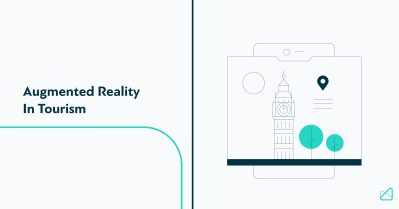
5 Ways Augmented Reality is Enhancing the Tourism Experience
20 min. Augmented reality (AR) can truly transform the way people discover and explore new places. By combining physical exploration with digital elements, travelers are able to gain deeper insights into different cultures while making memories along the way. In today’s world, more and more travelers are turning to technology to add excitement and convenience […]

Unlocking the Potential of Blockchain Technology in Travel
11 min. Blockchain technology has opened up the potential to revolutionize the travel and tourism industry, allowing businesses and travelers alike to benefit from the safety, security, and efficiency that Blockchain provides. According to Informatics research, “In 2025, blockchain technology is expected to become a central component of business operations in the hospitality and tourism […]



